The Story of Sunken Road
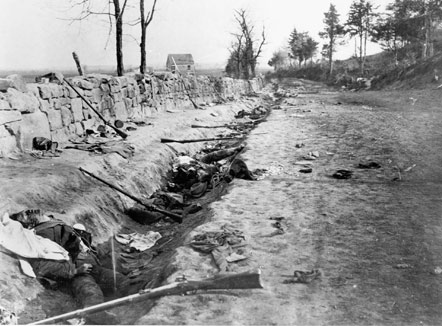 |
| photo taken in 1863 |
 |
| Same photo taken 2012 |
The other photo was taken from about the same spot as the historic view above. In the early 19th century a stone wall was built along this three block section. During the first Battle of Fredericksburg on December 13, 1862, the wall protected Southern soldiers fortunate to stand behind it. Behind the wall, only around 300 Confederate soldiers were shot. By contrast in front of the wall, approximately 8,000 Union soldiers were hit. After the war, much of the wall was removed. A portion was rebuilt in the 1930's and in 2004.
 |
| Sunken Road |
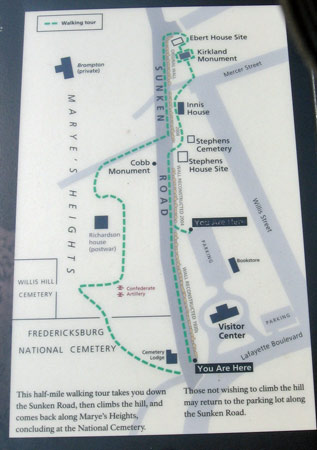 |
| Map of Sunken Road/Marye's Heights walking Tour |
The Story of General Thomas R.R. Cobb
Early in the battle, General Thomas R.R. Cobb was mortally wounded within sight of the house where his mother was born. As the primary writer of the Confederate Constitution, Cobb was the best known soldier killed in the Battle of Fredericksburg. For more information on Cobb's life and death.
Several years after the war, Rufus B. Merchant, a former member of Cobb's Legion, suggested that the state of Georgia purchase Martha Stephens's house along the Sunken Road and create a small park in memory of Cobb's Georgia Brigade, the centerpiece of which would be a monument to Cobb. Merchant found some support, but the Cobb family disapproved fearing that a public fundraising effort might "have the semblance of ostentation, and perhaps excite jealousies...." Instead the family erected a small monument, shown here, in 1888 on or very near the spot where Cobb was mortally wounded.
The Story of Martha Stephens
Martha Stephens (also spelled Stevens) lived along the Sunken Road. She had several common law husbands and interchangeably used three different last names, apparently a reflection of her mood at the moment. She also owned the adjacent Innis House, one of her other last names. Martha's social status rose considerably in the aftermath of the Battle of Fredericksburg because of her help to Confederate soldiers. This monument was erected to her by the United Daughters of the Confederacy and dedicated on December 18, 1917. The inscriptions states "Here Lived Mrs. Martha Stephens Friend of the Confederate Soldier, 1861-1865 U.D.C.
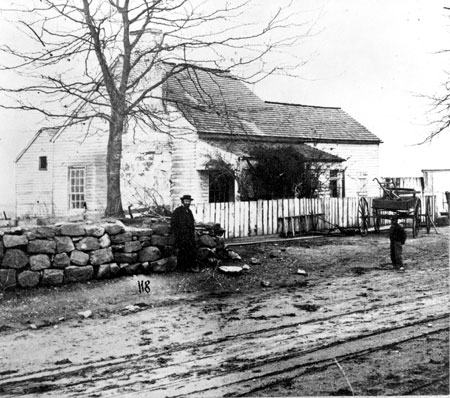 |
| House pre Civil War |
The Stephens House was built prior to the war and lived in by Edward Stephens and his common law wife, Martha Stephens who interchangeably used three last names in written records. During the Battle of Fredericksburg it was used as a headquarters by General Thomas Cobb and General Joseph Kershaw.
 |
| House 2012 |
The Innis House was built about 1861 on property owned by Martha Stephens. In 1861 it was lived in by John Innis, one of Martha's common law husbands. Today it is owned by the National Park Service and is open on special occasions such as during the anniversary of the battle and on the Saturday evening of the Memorial Day weekend.
The Innis House was lived in until the 1970's. After the house was sold to the park, restoration work returned the house to its 1862 appearance. Work crews removed modern layers of wood and wall paper revealing hundreds of bullet holes like the ones seen here.
This 19th century view shows the Sunken Road, Stone Wall and Innis House
This modern view is from about the same place as the photo above. Note the stone walls on both sides of the road which are original. Also note that the road is sunken in this section. The wall beyond the Innis House was rebuilt in 2004
 |
| Richard Rowland Kirkland, 2nd South Carolina Regiment |
On December 14, the day after the major assaults, thousands of injured and suffering Union soldiers in front of the stone wall cried for help. Richard Rowland Kirkland, a 19 year old sergeant from South Carolina, voluntarily risked his life to take water and provide assistance to the suffering Union soldiers. He later became famous as the Angel of Marye's Heights.
These are just a few of the many stories we read or heard about on this afternoons outing and the walking tour was a nice leisurely stroll throughout this part of the
Fredericksburg National Military Park.
 |
| Drum used in the Civil War |
Have Fun, Travel Safe & Stay Healthy!!!







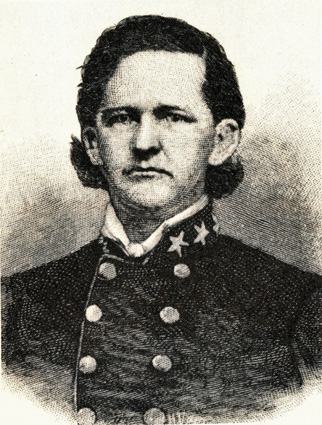
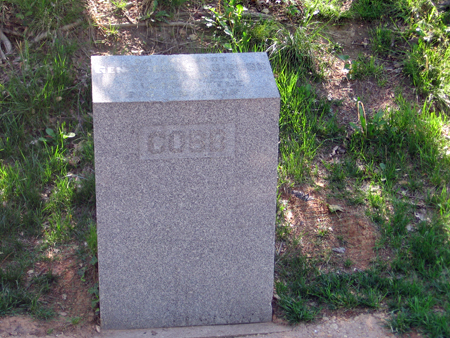
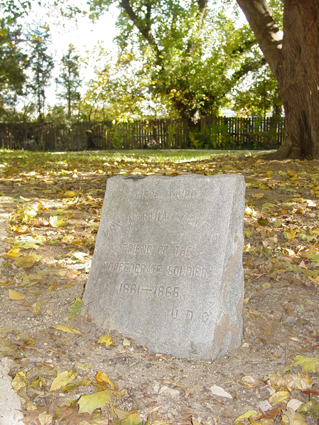
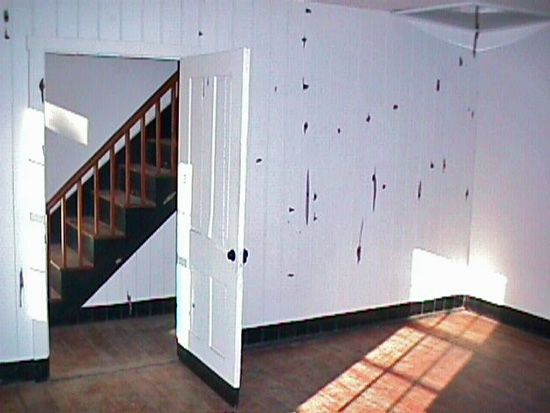
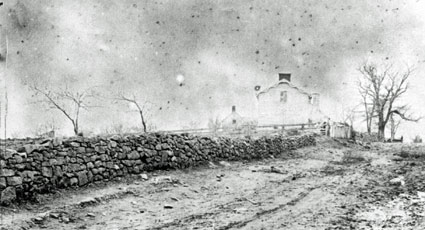
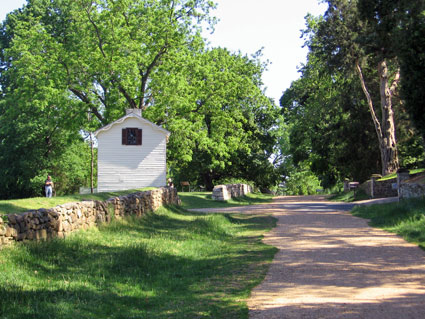
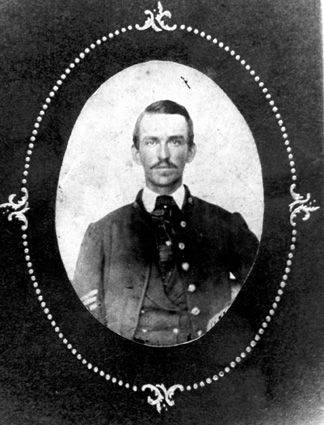





3 comments:
Antietam National Battlefield is similarly fascinating and has its own sunken road that is better known as Bloody Lane. You might enjoy exploring it if you're heading north. And if you do, download the scavenger hunt from the NPS website; it's an interesting way to tour the battlefield. We did that when we went in March and enjoyed the search for information. And just a bit south of Frederickburg is the Stonewall Jackson Shrine, which we found to be an interesting spot when we came upon it by chance last December.
great post Donna, we've stayed at the same KOA...love fredericksburg..had friends that used to live there...love your pictures
Very interesting post. Loved the history lesson and showing the old and new photos of the same area was a great idea. Thanks for sharing.
Post a Comment